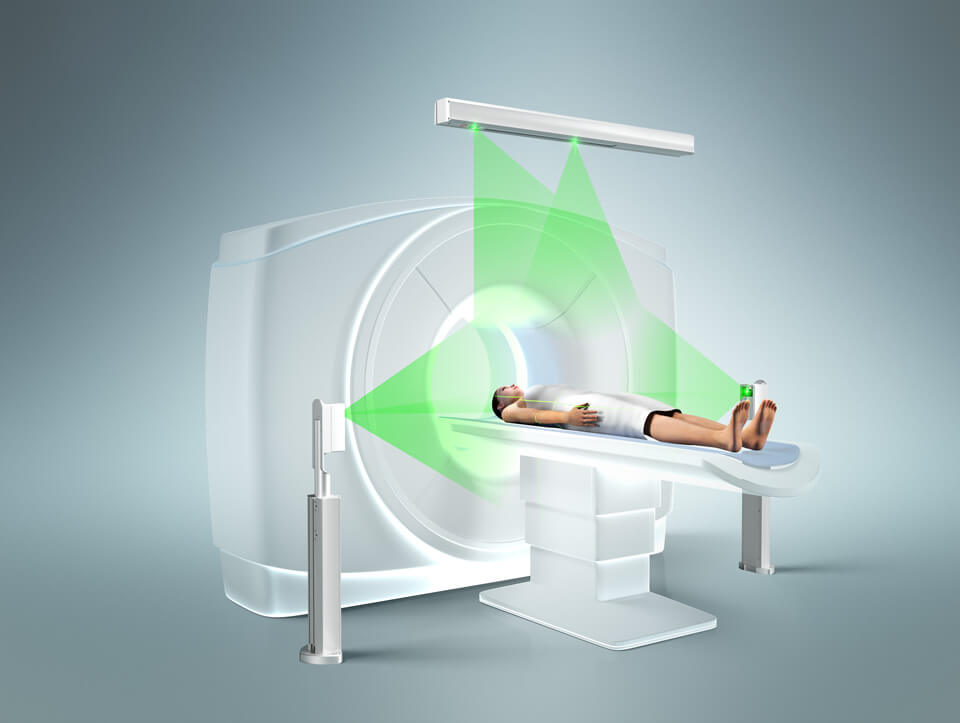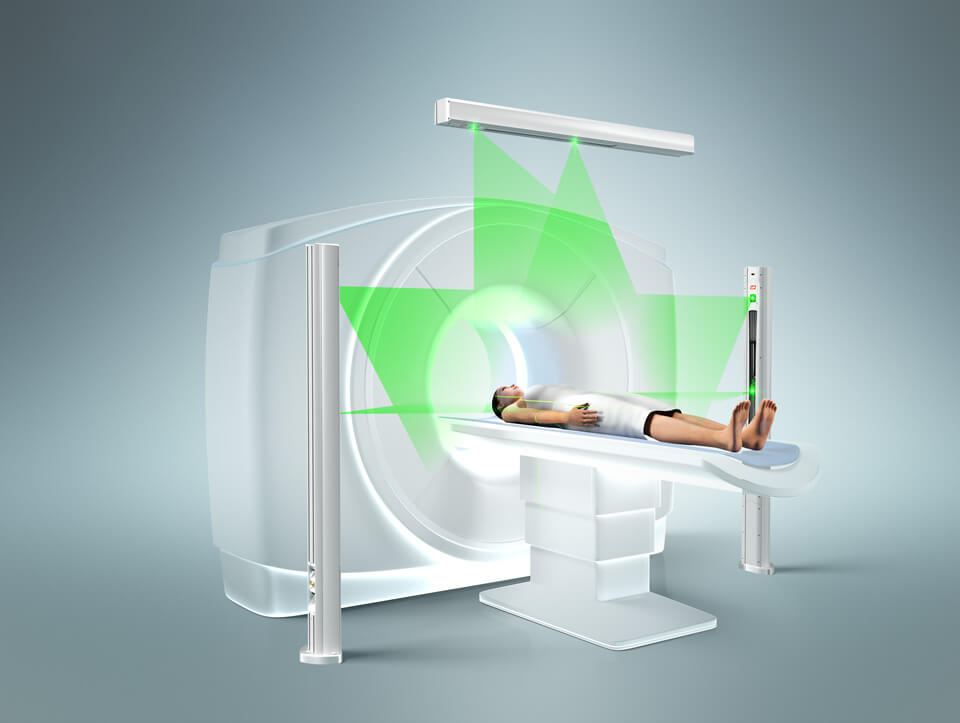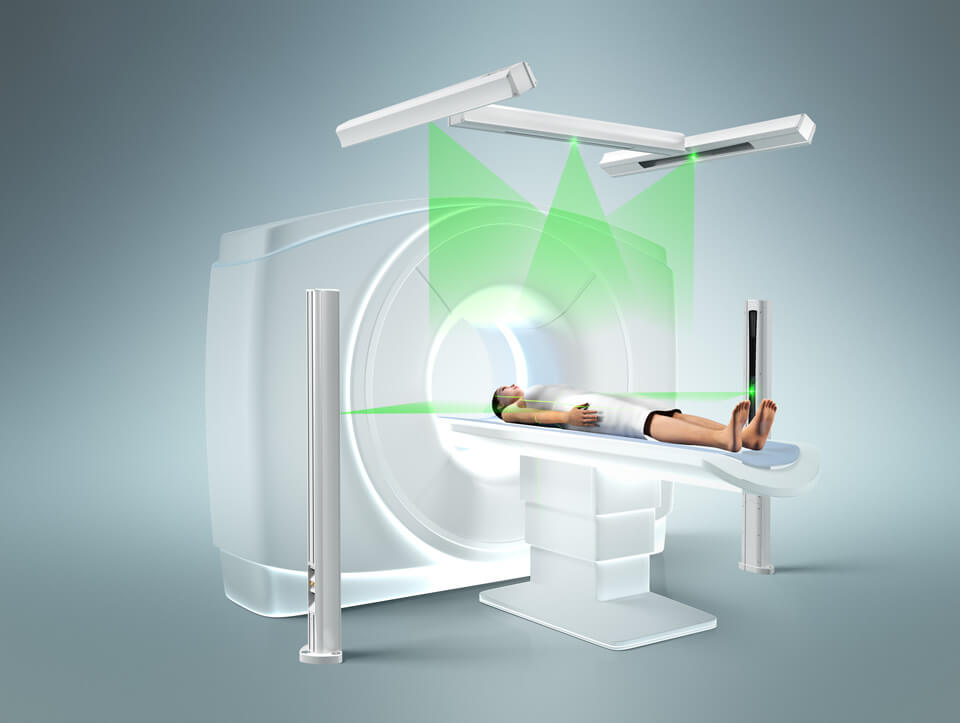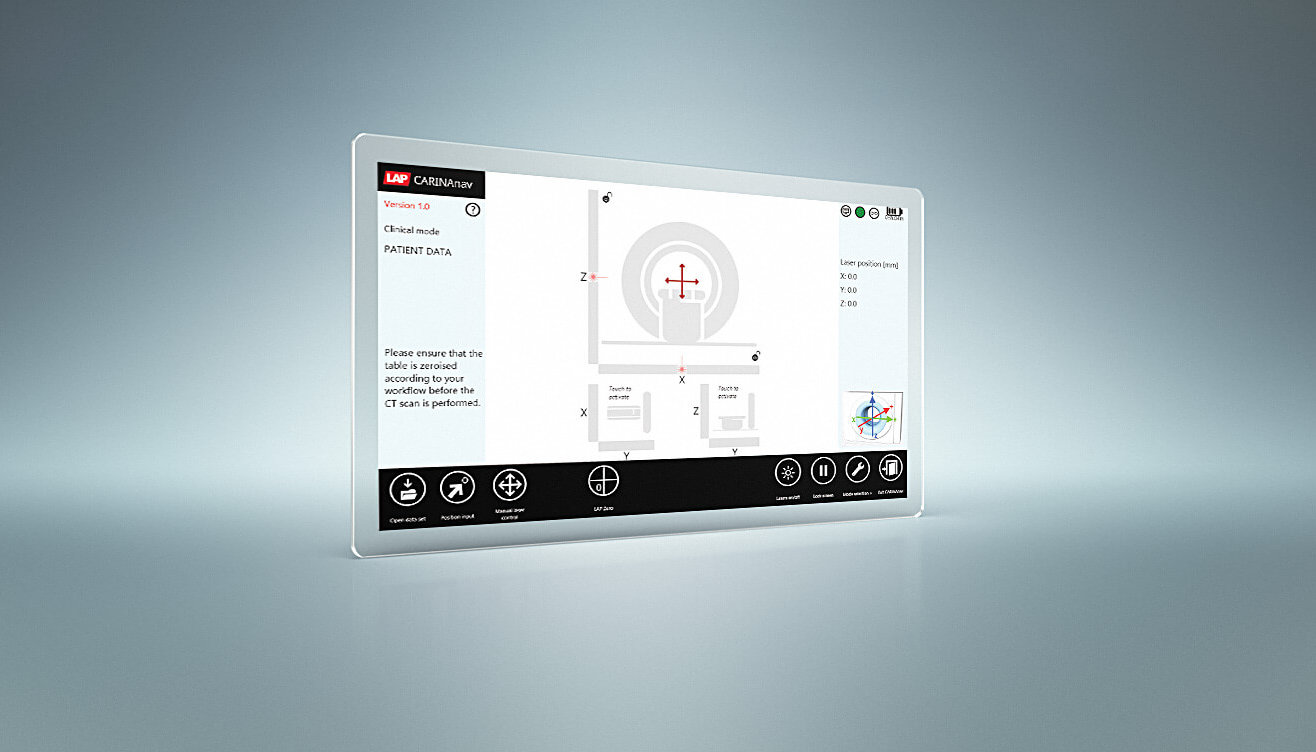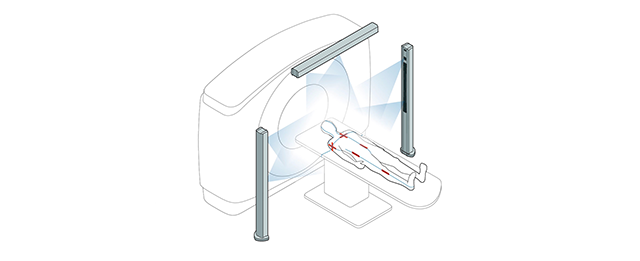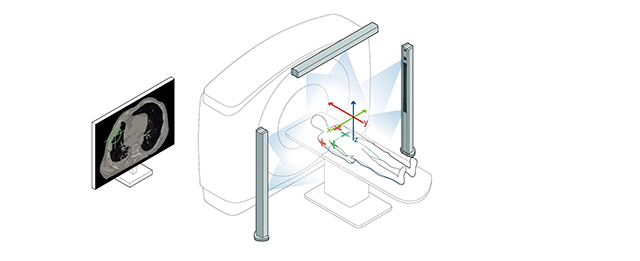CARINAnav – smart laser control
The CARINAnav system required for steering the laser system consists of the laser control software and hardware aligned with it, such as a tablet or desktop PC. Various data interfaces like LAP file format or DICOM Standard are available for transmitting coordinates. Customers using the SIEMENS syngo.via RT Image Suite have the option of controlling the lasers directly from the imaging software. Find out more about CARINAnav here.
Technical data
| Dimensions | Depending on mounting version; please consult out data sheets |
|---|---|
| Laser color (typical wave length) | red (638 nm), green (520 nm), blue (450 nm) |
| Laser class | 2 |
| Laser adjustment | by remote control |
| Line width up to 4 m distance | < 0.7 mm (green, blue), < 1 mm (red) |
| Line length at 3 m distance | > 3 m |
| Positioning accuracy | +/- 0.1 mm |
| Projection precision | +/- 0.5 mm at a projection distance of 4 m |
| Travel range | 700 mm |
| Travel speed | up to 200 mm/s |
| Power supply | 100-240 V AC, 50-60 Hz |
| Scope of delivery | Laser system, CARINAnav laser control, remote control, Wilke phantom, cable set |
State-of-the-art laser systems for optimal patient marking at CT/PET-CT
Save precious time at the linear accelerator (LINAC) and prepare your patients in the best possible way at CT/PET-CT. Lasers at CT help project coordinates onto the patient's surface that are defined as a reference between the patient's internal and external anatomy. In this way the DORADOnova laser system enables precise registration of CT and MRI data and links imaging with planning and treatment as required by the report of AAPM Task Group 66.
The DORADOnova laser systems can be completely configured according to your needs. You have the choice of whether only one or all five laser lines can be moved. Choose between the three laser colors red, green or blue. The lasers can be adjusted by remote control. The control software CARINAnav will be delivered pre-installed on a tablet or desktop PC.
Lay the foundation for reproducible positioning of your patients throughout the entire treatment with DORADOnova.
Q&A
How long is the laser line?
The length of the laser line is equal to the distance between laser source and patient. Therefore, for example, the laser line is only one meter long at a distance of one meter, but 4 meters long at a distance of 4 meters.
How can LAP ensure projection precision?
The projection precision is influenced by the straightness of the rail and the temperature. During production, the projection accuracy of each rail is checked twice and documented in the Delivery Report. If it is not within the tolerance, the rail is not used. Only laser devices that pass these stringent checks will be used.
Which color should I choose?
Historically, red was the only laser color that could be technically realized for a long time. Today, the laser colors red, green and blue can also be offered. Here, the human eye perceives green as a sharper line than red and blue sharper than green. Another aspect you should consider is the skin color of your patients. Overall, after 20 years of experience, it can be stated that the green laser color is the most popular.
Do I get a quality report?
Yes, during production a Delivery Report with all the quality parameters is created for each laser system, which is handed over to our customers after installation.
How can I combine the imaging modalities CT and MRI for radiation therapy?
The DORADOnova laser system can be used to project reference or target coordinates on the patient's skin, which are then marked by clinical staff. These coordinates serve as the basis for patient planning and are used to position the patient on the MRI: Using the DORADOnova MR3T Laser System, the same coordinates that were used on the CT are projected and the patient is aligned with them.
This lays the foundation for reproducible positioning of your patients throughout the different imaging modalities.

